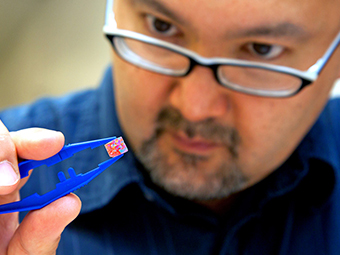Document Type
Article
Publication Date
1-2024
Abstract
We present the results of an ultradeep radio continuum survey, containing ∼480 hr of observations, of the Galactic globular cluster 47 Tucanae with the Australia Telescope Compact Array. This comprehensive coverage of the cluster allows us to reach rms noise levels of 1.19 μJy beam−1 at 5.5 GHz, 940 nJy beam−1 at 9 GHz, and 790 nJy beam−1 in a stacked 7.25 GHz image. This is the deepest radio image of a globular cluster and the deepest image ever made with the Australia Telescope Compact Array. We identify ATCA J002405.702-720452.361, a faint (6.3 ± 1.2 μJy at 5.5 GHz, 5.4 ± 0.9 μJy at 9 GHz), flat-spectrum (α = −0.31 ± 0.54) radio source that is positionally coincident with the cluster center and potentially associated with a faint X-ray source. No convincing optical counterpart was identified. We use radio, X-ray, optical, and UV data to show that explanations involving a background active galactic nucleus, a chromospherically active binary, or a binary involving a white dwarf are unlikely. The most plausible explanations are that the source is an undiscovered millisecond pulsar or a weakly accreting black hole. If the X-ray source is associated with the radio source, the fundamental plane of black-hole activity suggests a black hole mass of ∼54–6000 M⊙, indicating an intermediate-mass black hole or a heavy stellar-mass black hole.
Recommended Citation
Paduano, Alessandro, Arash Bahramian, James CA Miller-Jones, Adela Kawka, Tim J. Galvin, Liliana Rivera Sandoval, Sebastian Kamann et al. "Ultradeep ATCA imaging of 47 Tucanae reveals a central compact radio source." The Astrophysical Journal 961, no. 1 (2024): 54. https://doi.org/10.3847/1538-4357/ad0e68
Publication Title
The Astrophysical Journal
DOI
10.3847/1538-4357/ad0e68



Comments
Original content from this work may be used under the terms of the Creative Commons Attribution 4.0 licence. Any further distribution of this work must maintain attribution to the author(s) and the title of the work, journal citation and DOI.